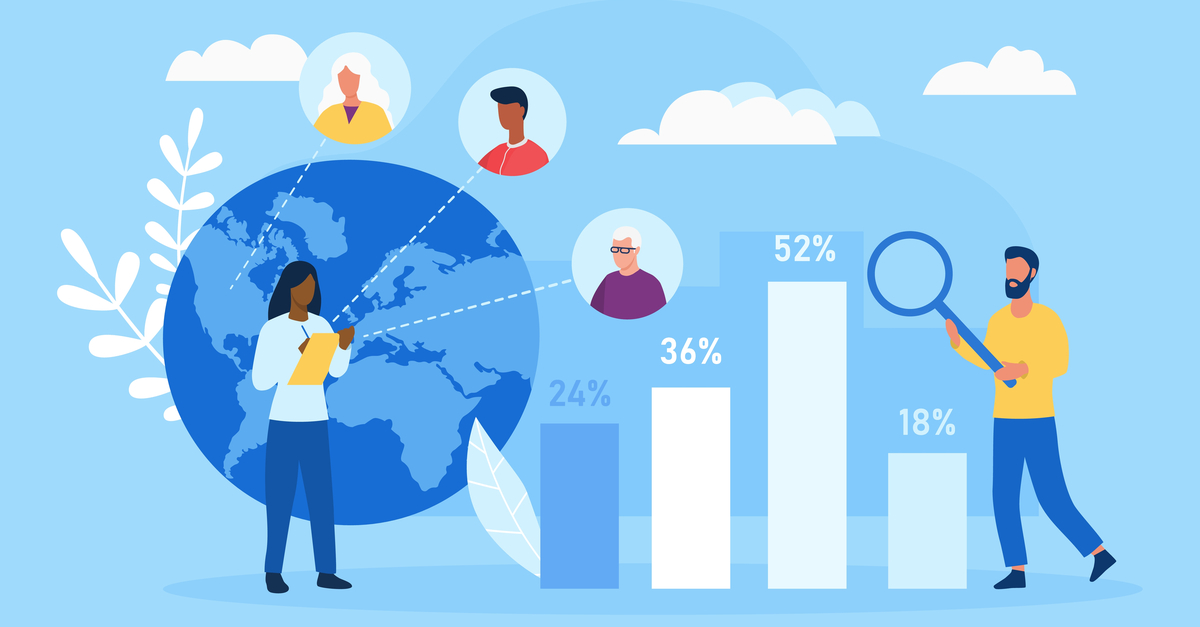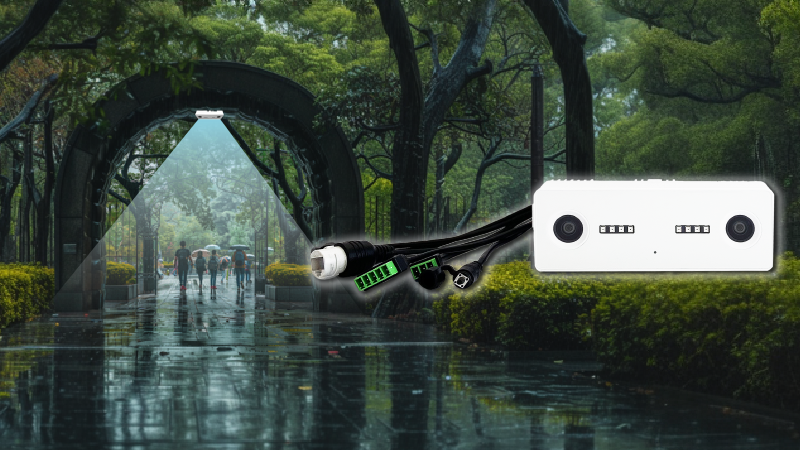Every individual has unique wants and needs when it comes to shopping. The shopping experience and customer behavior can vary significantly based on a range of factors. As Nietzsche famously stated, “All generalizations are false, including this one.” This paradox holds true, as many studies reveal that various demographic factors are crucial for crafting effective marketing strategies that drive business growth—though the specific product and target audience ultimately shape these strategies.
In general, women and men tend to shop differently, which suggests that distinct approaches are necessary to appeal to each group. When you factor in age groups, the complexity increases even further. For instance, if you’re marketing a high-tech product, targeting older generations may not be effective. According to Statista, women aged 18 and older are more frequent purchasers of sports equipment and gear, with the athletic apparel market comprising approximately 60% women and 40% men. While getting personal with your business growth strategies can be challenging, data can reveal valuable insights—provided you leverage the right technology and solutions.
Understanding gender and age demographics remains essential for businesses of all sizes when planning promotional campaigns and boosting sales. By grasping the demographic profile of your customers, you can create a more personalized shopping experience. Tailoring your offerings to align with your primary audience’s interests can involve curating products and brands that resonate with them, enhancing product display and placement, and optimizing store layout to reflect their preferences.
In this article, we’ll explore how to harness demographic analysis tools and AI to elevate your brick-and-mortar business.
How Demographic Profiles Affect Shopper Behavior

It is important to take into account that different demographics have different needs, preferences, and shopping habits. People differ significantly in their perspectives and rationales, whether they are males or females, young or old. In the end, though, people want to buy and they want a variety of products and brands to choose from. It’s your responsibility to find out which demographic groups want what and make the purchasing process as easy and profitable as it can be. In order to do that, you’ll need a reliable technology not only that can count people but count them with nearly flawless accuracy (to have healthy and actionable data) and group them into genders and ages. In the end, their differences usually influence their purchasing decisions.
According to studies, shopping for men typically involves a straightforward process. They usually know what they want to buy in advance, arrive at the store, pick up the product they want, proceed to checkout, pay, and leave. They rarely shop around for cheaper alternatives or stay around to compare products. When they can’t find what they’re looking for, they pick the closest alternative. Most men hate leaving stores empty-handed.
In contrast, women may have a particular product in mind, but they’ll continue searching for better alternatives. When they don’t find the product they want, they are willing to leave. They might take longer to make a purchase decision. Most middle-aged and older women customers love coupons and will willingly spend more time searching for bargains, but men prefer to speed up the buying process by paying more.
When store managers are aware of the prevalent age and gender of their customers, as well as the differences in their shopping behaviors, they are able to predict their customers’ needs and tailor their services accordingly.
Keep in mind that, while the above comments rely heavily on studies and research, at the end of the day, generalizations, and your customers’ behavior may differ greatly, hence why you need to find out who they’re and what they want and how you can use this information to maximize your revenue.
In-Store Gender Recognition
Recognizing a customer’s gender is a tough task, even for today’s AI solutions. You can’t just automatically assume your potential customer’s gender just by letting the AI analyze the person it tracks via stereotypical features. Men can have long hair too, women can have short hair; some women are tall and some men are short and slim and the variables go on and on.
V-Count’s gender recognition solution is in-house developed and it’s receiving updates regularly to perform better with each addition. It uses state-of-the-art facial recognition AI technology to provide highly accurate results. The traffic tracking sensor is installed at an angle that can view the visitors’ faces and the AI analyzes the facial features and identifies the person’s gender, transfers the information to the business intelligence platform (an online, user-friendly interface) and it processes all the data anonymously. The in-house developed machine learning algorithm is fully GDPR compliant.
When you know the gender profiles of your potential and existing customers you can optimize marketing activities to accommodate the customer base, gain new customers via new strategies, or re-engage lost customers with new promotions.
Using customer segmentation data, physical businesses can better understand their customers’ profiles and provide better service based on their demographics. Managers can measure the efficiency of marketing strategies and tailor advertising methods according to the gender trends of their customers.
The gender recognition software can improve merchandising effectiveness by choosing assortments based on visitor gender data. You can also optimize stock allocation & design a customer journey based on the gender demographics of your customers.
Storefront Demographics

Using the V-Count Storefront Demographics solution, you can identify potential customers based on their demographic profile and come up with new plans to attract them, and turn them into customers. Using this visualized data you can tell the gender and age distribution of customers showing interest in your stores. You can then choose the right products to display to convert these curious eyes into paying customers. A reliable storefront solution can also help you re-engage with customers who’re regularly passing by your store but not anymore shopping from you.
The sensors pick up all the demographic information anonymously, and you can generate a variety of actionable reports based on the number of people passing by, their gender and age distribution, and even attention time.
By segmenting your customers, you can better understand their profiles to deliver better service, measure your marketing campaign’s effectiveness and tailor your advertising techniques to your customers’ demographic trends to boost conversions.
You can also choose assortments in line with your visitors’ gender and age data to achieve efficient merchandising and better business results. Additionally, you can optimize window displays based on the gender demographics of visitors passing by your store to draw more people in.
A traffic counter can also help you save greatly on energy costs. Not only can you decrease the overall operations cost and optimize your energy spending, but you can also read the data and know when your storefront attracts people the most, and display digital ads accordingly.
Why Leverage Demographic Analysis Solutions for Your Business

When you know the demographic profile of your visitors, you can gain some core insights without in-depth analysis. Say, you’re running a high-tech gadget store. Most likely, your dominant customer profile is dominated by men, probably in their twenties and thirties. You can guess it, or you can truly know it. The latter will allow you to invest and diversify in new lines or products and increase selling opportunities that appeal to this demographic. Follow the trends, and combine your expertise with accurate traffic counting technologies and your recipe for success will be complete.
Of course, having said all of that, if a high percentage of your visitors are women then you’re likely to redesign your store according to their in-store journey and aim to deliver the best customer experience.
Demographic profiles also help improve window displays, marketing initiatives, product placement, and store layout.
Demographic analysis solution shows you what age groups and genders your store attracts. Once you have the data, you can compare it with the products you are offering. A menswear store that mainly attracts men is on the right track; if however, your marketing campaigns are not directly targeting the age bracket you need, you can adjust them to better target men in your target market.
For stores that appeal to both men and women, the last thing a manager wants is predominantly male or female visitors. Increasing engagement and selling opportunities requires diversity for these stores. You want to attract all groups of people. A targeted marketing campaign is needed if your data shows that a certain demographic group does not visit your store. Unless you see an opportunity growing, balance is needed and people counters will once again come to your rescue.
Conclusion
Businesses, old or new, need to remain competitive in the current retail climate. With technological solutions like Demographic Analysis, managers can optimize every step of their business process, attract the type of visitors they need, improve product and service delivery, and boost customer satisfaction.






